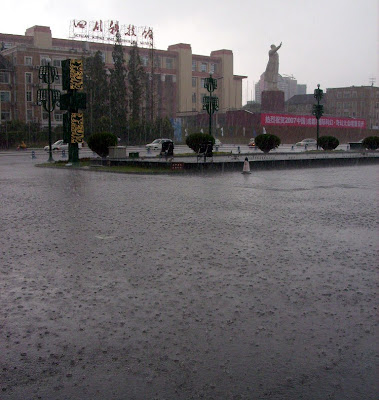
Beijing's 'Ancient Palace' (
GuGong) is among the world's largest and most elaborate, and is about six hundred years old. The complex also houses the Palace Museum. Getting in is 60 rmb, which does not include admission to other museums in the vicinity. (The audio guides are 10 rmb for Chinese and 40 for other languages.) It also does not include admission, after you get inside, to the hall of jewellery and the hall of clocks and watches. Anyways, it is undoubtedly a magnificent place to visit both for the buildings and for the contents. I spent most of a day there and did not get through all the areas that are open to the public.
Meridian Gate, with its five stone bridges:

The largest and grandest buildings are in the Outer Court. I found the smaller palaces and living areas with their gardens in the inner court much more interesting. My audio guide was supposed to sense where I was and could tell stories associated with a location wherever I wandered. It worked more than half the time.

Right most dragon of the mosaic Nine Dragon Screen, one of three or four in China. A dragon is the Emperor's symbol.

The Hall of Clocks and Watches was among the most interesting of the museum exhibits. I love old machines and many of them had moving birds, flowers, and other figures. (They were not running when displayed, but there was a movie that showed some of the collection in motion.) The pottery was also really fascinating - I love how something so beautiful and delicate has survived for centuries. Some of the neatest stuff in that exhibit was the shards and pieces from kilns in different parts of China showing the different styles.
The tiled roofs and painted eaves are the most gorgeous features of the buildings. The number of gargoyles indicate the building's rank in the complex; the highest number is 11. The gargoyles also keep the tiles in place.

The Crystal Palace, unfinished when the Qing Dynasty fell. According to my audio guide it was supposed to have a moat and double glass walls filled with fish.






















